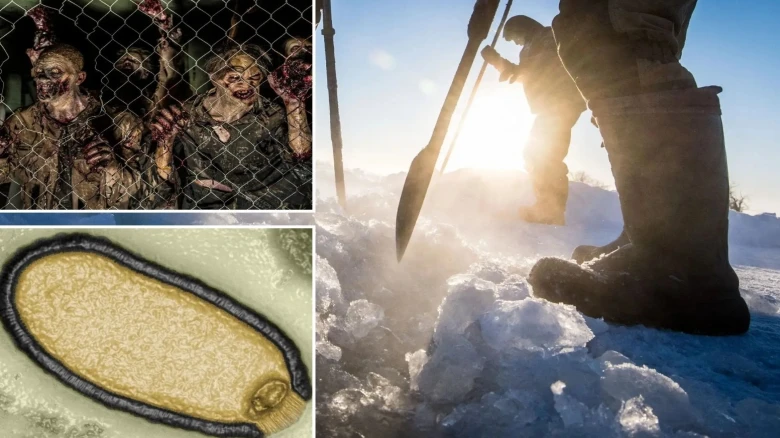The alarm has been sounded as rising temperatures, fueled by global warming...
Digital Desk: In the icy realms of the Arctic, a silent threat lurks beneath the frozen surface. Scientists have issued a stark warning about the potential dangers posed by ancient viruses entombed in the permafrost, which, if released, could trigger a catastrophic global health emergency. The alarm has been sounded as rising temperatures, fueled by global warming, relentlessly melt the once-frozen ice caps.
Last year, geneticist Jean-Michel Claverie of Aix-Marseille University undertook a groundbreaking initiative by reviving some of these "zombie viruses" from samples extracted from Siberian permafrost.
Despite spending millennia frozen in the ground, live viruses demonstrated their ability to infect single-celled creatures, as evidenced by Claverie's team in Siberia back in 2014. While the viruses isolated were benign to humans, the discovery raised concerns about the potential existence of viruses with the capability to trigger new and dangerous disease outbreaks.
In an interview, Claverie emphasized the oversight in current pandemic threat analyses, which primarily focus on diseases emerging in southern regions and spreading north. The potential for an outbreak originating in the far north and traveling south has been neglected. Marion Koopmans of the Erasmus Medical Center supported this viewpoint, stressing the need to acknowledge the real risk of ancient viruses in the permafrost, which might have the potential to unleash diseases like an ancient form of polio.
The permafrost, covering a fifth of the Northern Hemisphere, has acted as a time capsule preserving not only ancient viruses but also the mummified remains of extinct creatures.
However, this frozen repository is now under threat due to the rapid disappearance of Arctic sea ice, a consequence of global warming. The diminishing ice allows increased shipping, traffic, and industrial development in Siberia, where massive mining operations are planned. These operations, penetrating deep into the permafrost to extract oil and ores, may inadvertently release vast amounts of dormant pathogens.
"The danger comes from another global warming impact: the disappearance of Arctic sea ice. That is allowing increases in shipping, traffic, and industrial development in Siberia. Huge mining operations are being planned, and are going to drive vast holes into the deep permafrost to extract oil and ores. Those operations will release vast amounts of pathogens that still thrive there. Miners will walk in and breathe the viruses. The effects could be calamitous," warned Claverie.
As the Arctic region warms at a rate several times faster than the global average, the urgency to address this perilous situation becomes more pronounced. The potential consequences of awakening ancient viruses, coupled with the accelerating industrial activities in the Arctic, demand a renewed focus on preventive measures and a comprehensive understanding of the risks involved.
In the race against time, scientists advocate for increased research, surveillance, and international cooperation to mitigate the potential fallout from these "zombie viruses" lying dormant beneath the melting permafrost. The Arctic, once a remote and frozen expanse, is now a critical battleground where humanity must confront the hidden perils of its own making.

Leave A Comment